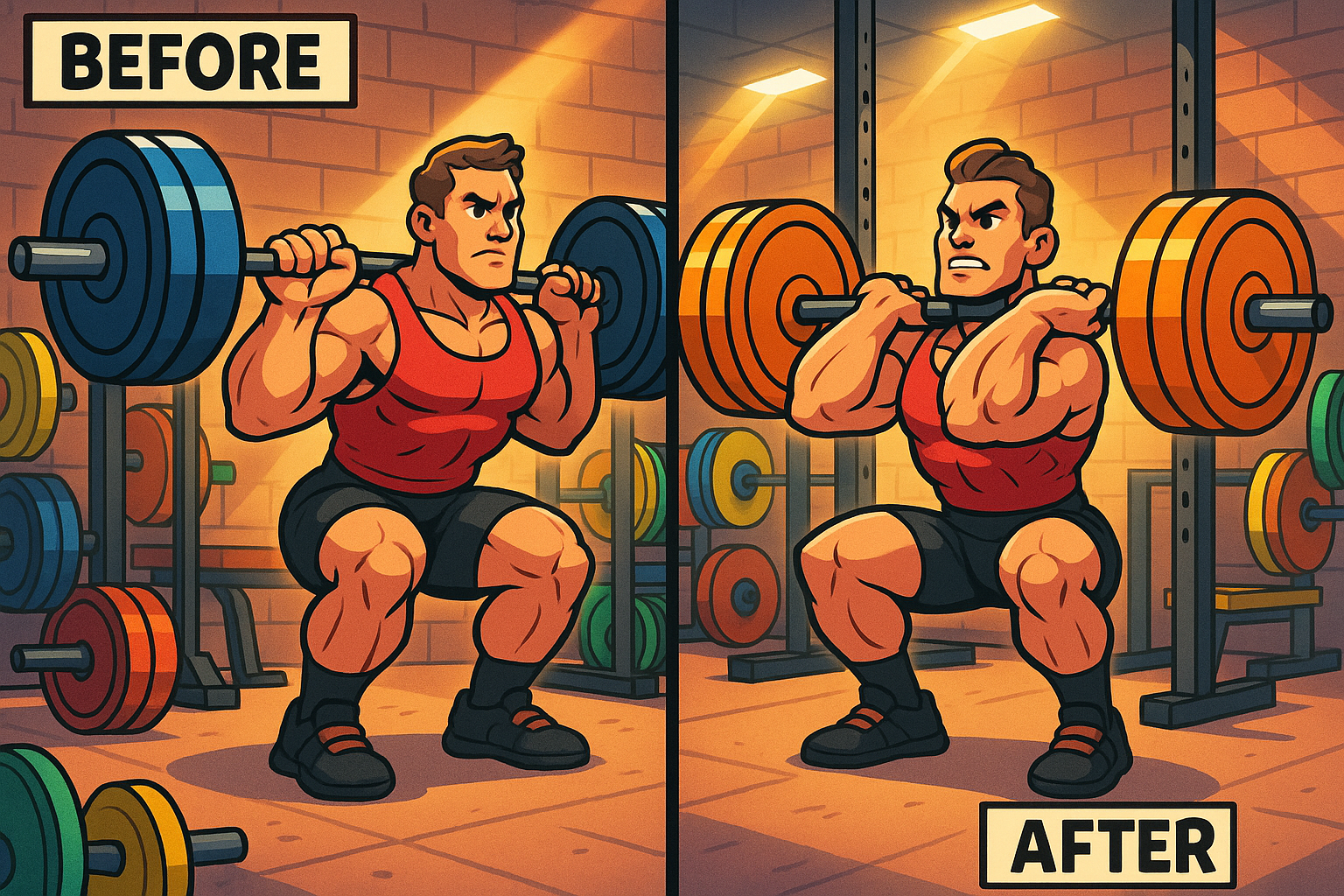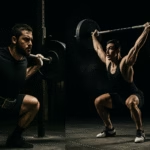Powerlifting success isn’t just about perfecting your squat, bench press, and deadlift technique. While these three main lifts form the foundation of any powerlifting program, accessory exercises play a crucial role in building strength, addressing weaknesses, and preventing injuries. This comprehensive guide explores the most effective accessory exercises for each powerlift, helping you maximize your performance and break through plateaus.
Understanding Accessory Exercises in Powerlifting
Accessory exercises, also known as assistance exercises, are supplementary movements that target specific muscle groups and movement patterns related to the main powerlifts. These exercises serve multiple purposes: strengthening weak points, improving technique, building muscle mass, and reducing injury risk. The key to effective accessory work lies in selecting exercises that directly transfer to your main lifts while addressing your individual weaknesses.
Best Accessory Exercises for the Squat
The squat is a complex movement that requires strength, mobility, and coordination throughout the entire body. Effective squat accessories target the quadriceps, glutes, hamstrings, core, and upper back to improve overall squat performance.
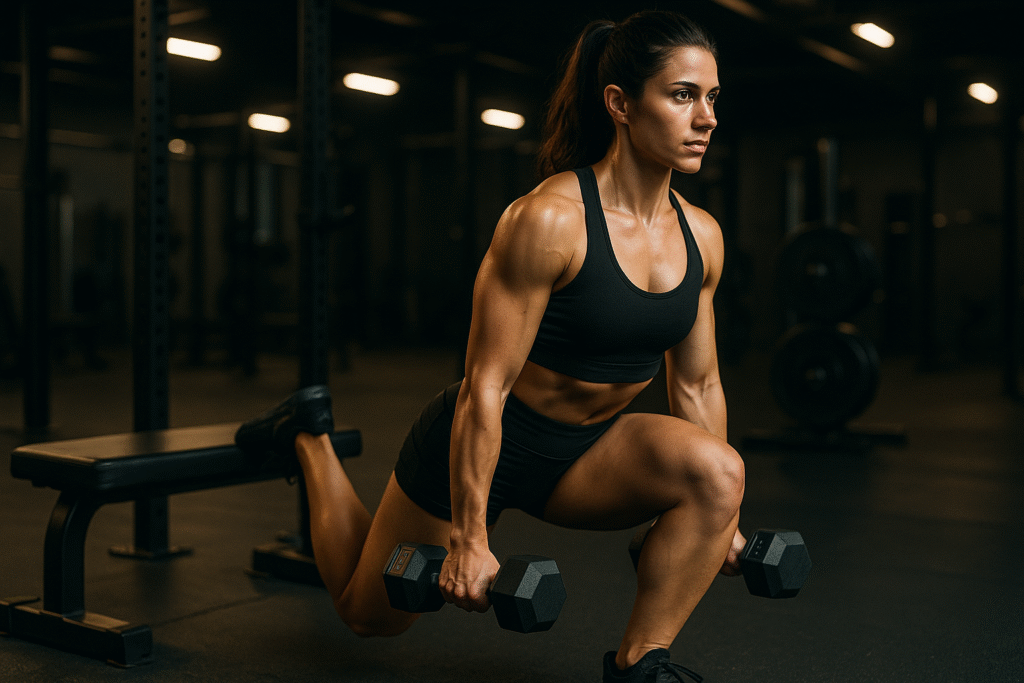
Primary Squat Accessories
| Exercise | Primary Muscles | Sets x Reps | Benefits |
|---|---|---|---|
| Front Squat | Quadriceps, Core, Upper Back | 3-4 x 5-8 | Improves upright torso position, quad strength |
| Bulgarian Split Squat | Quadriceps, Glutes, Single-leg stability | 3 x 8-12 each leg | Addresses imbalances, unilateral strength |
| Pause Squat | Full squat muscles, Core stability | 3-4 x 3-5 | Improves bottom position strength |
| Box Squat | Glutes, Hamstrings, Hip drive | 3-4 x 3-6 | Teaches proper hip hinge, explosive power |
| Goblet Squat | Quadriceps, Core, Mobility | 3 x 10-15 | Improves squat pattern, ankle mobility |
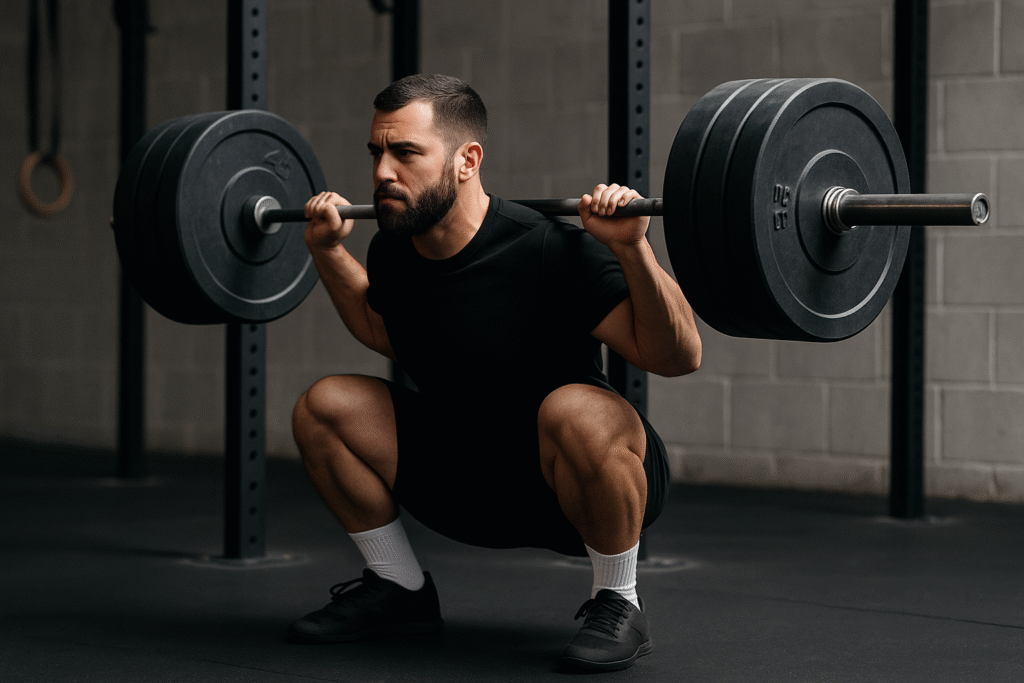
Secondary Squat Accessories
| Exercise | Primary Muscles | Sets x Reps | Benefits |
|---|---|---|---|
| Walking Lunges | Quadriceps, Glutes, Balance | 3 x 12-16 steps | Single-leg strength, stability |
| Leg Press | Quadriceps, Glutes | 3-4 x 10-15 | High-volume leg strength |
| Romanian Deadlift | Hamstrings, Glutes, Posterior chain | 3-4 x 8-12 | Hip hinge pattern, hamstring flexibility |
| Good Mornings | Hamstrings, Glutes, Erector spinae | 3 x 8-12 | Posterior chain strength, hip mobility |
| Calf Raises | Calves, Ankle stability | 3-4 x 15-20 | Ankle strength and stability |
The front squat deserves special attention as it’s arguably the most effective squat accessory. By positioning the weight in front of your body, front squats force you to maintain an upright torso while heavily loading the quadriceps. This directly translates to improved squat technique and increased leg drive out of the bottom position.
Pause squats are another invaluable accessory that involves holding the bottom position of the squat for 2-3 seconds before standing up. This exercise eliminates the stretch reflex and forces you to generate power from a dead stop, mimicking the competition environment where you must pause before receiving the “up” command.
Best Accessory Exercises for the Bench Press
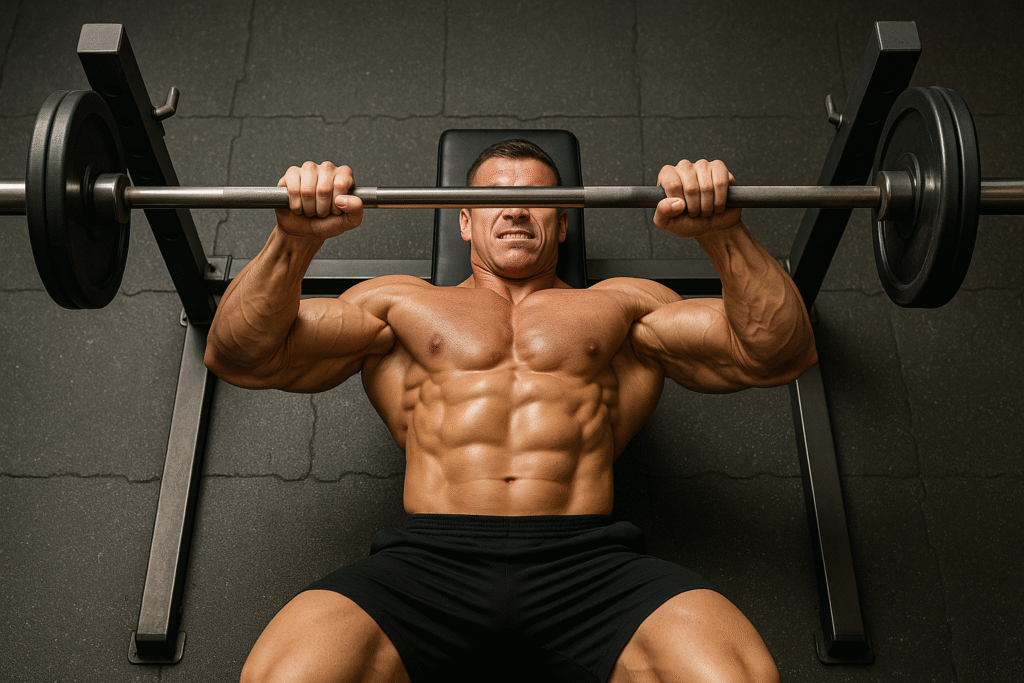
The bench press requires coordination between the chest, shoulders, and triceps, with significant contributions from the upper back and core for stability. Effective bench press accessories target these muscle groups while improving pressing mechanics.
Primary Bench Press Accessories
| Exercise | Primary Muscles | Sets x Reps | Benefits |
|---|---|---|---|
| Close-Grip Bench Press | Triceps, Front deltoids | 3-4 x 6-10 | Tricep strength, lockout power |
| Incline Dumbbell Press | Upper chest, Front deltoids | 3-4 x 8-12 | Upper chest development, stability |
| Dumbbell Flyes | Pectorals, Shoulder stability | 3 x 10-15 | Chest isolation, shoulder health |
| Overhead Press | Shoulders, Triceps, Core | 3-4 x 5-8 | Shoulder strength, core stability |
| Dips | Triceps, Lower chest | 3 x 8-15 | Tricep and chest strength |
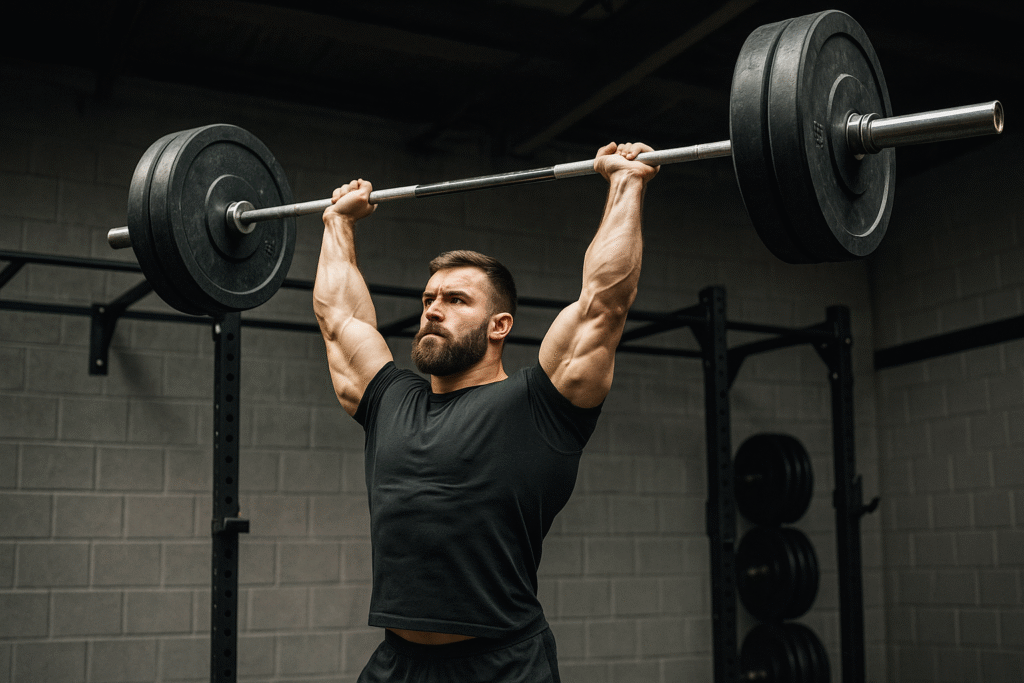
Secondary Bench Press Accessories
| Exercise | Primary Muscles | Sets x Reps | Benefits |
|---|---|---|---|
| Barbell Rows | Lats, Rhomboids, Rear delts | 3-4 x 8-12 | Upper back strength, posture |
| Face Pulls | Rear deltoids, Rhomboids | 3-4 x 15-20 | Shoulder health, posture |
| Tricep Extensions | Triceps | 3 x 10-15 | Tricep isolation |
| Lateral Raises | Side deltoids | 3 x 12-15 | Shoulder stability, deltoid development |
| Push-ups | Chest, Triceps, Core | 3 x 10-20 | Bodyweight pressing, endurance |
The close-grip bench press stands out as the most specific bench press accessory. By narrowing your grip, you shift emphasis to the triceps while still maintaining the bench press movement pattern. This exercise directly addresses one of the most common sticking points in the bench press – the lockout portion where tricep strength is crucial.
Overhead pressing movements like the military press or push press are excellent for building shoulder strength and stability. Strong shoulders provide a solid base for bench pressing and help prevent shoulder injuries that commonly plague powerlifters.
Best Accessory Exercises for the Deadlift
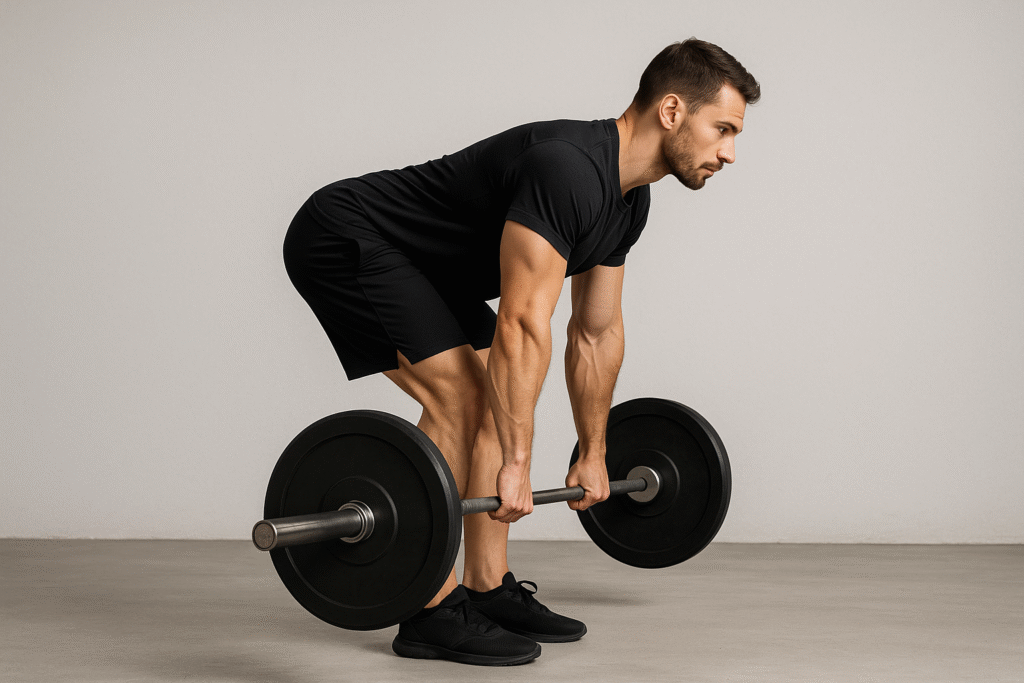
The deadlift is often considered the most complete exercise, engaging muscles from your feet to your head. Effective deadlift accessories target the posterior chain, grip strength, and core stability while addressing specific weak points in the deadlift range of motion.
Primary Deadlift Accessories
| Exercise | Primary Muscles | Sets x Reps | Benefits |
|---|---|---|---|
| Romanian Deadlift | Hamstrings, Glutes, Erector spinae | 3-4 x 6-10 | Hip hinge pattern, hamstring strength |
| Deficit Deadlift | Full deadlift muscles, Range of motion | 3-4 x 3-6 | Off-the-floor strength |
| Rack Pulls | Traps, Lats, Grip, Lockout muscles | 3-4 x 3-6 | Lockout strength, heavy loading |
| Stiff-Leg Deadlift | Hamstrings, Glutes, Lower back | 3 x 8-12 | Posterior chain flexibility |
| Sumo Deadlift (if conventional lifter) | Adductors, Glutes, Different mechanics | 3-4 x 5-8 | Movement variation, muscle balance |
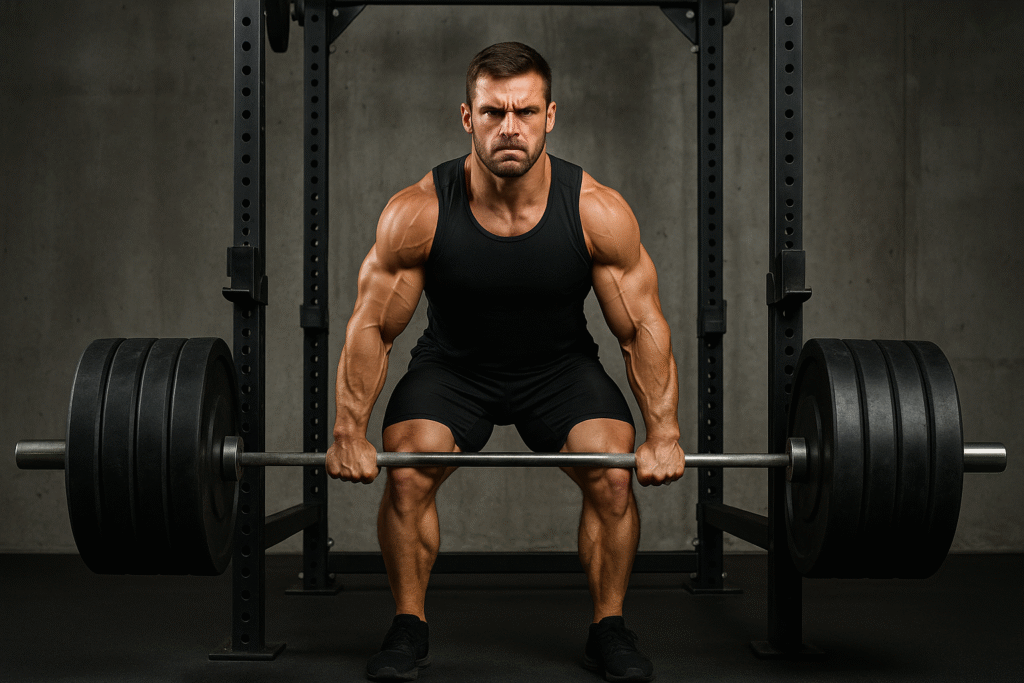
Secondary Deadlift Accessories
| Exercise | Primary Muscles | Sets x Reps | Benefits |
|---|---|---|---|
| Hyperextensions | Erector spinae, Glutes | 3 x 12-15 | Lower back strength, endurance |
| Farmer’s Walks | Grip, Core, Traps | 3 x 30-60 seconds | Grip strength, core stability |
| Barbell Rows | Lats, Rhomboids, Rear delts | 3-4 x 8-12 | Upper back strength |
| Glute Ham Raises | Hamstrings, Glutes | 3 x 8-12 | Posterior chain strength |
| Shrugs | Trapezius, Grip | 3-4 x 10-15 | Trap strength, lockout assistance |
Romanian deadlifts (RDLs) are perhaps the most valuable deadlift accessory exercise. They teach proper hip hinge mechanics while building tremendous strength in the hamstrings and glutes. The RDL’s range of motion closely mimics the top portion of the deadlift, making it highly specific to the main lift.
Deficit deadlifts involve standing on a platform (typically 1-4 inches high) to increase the range of motion. This accessory is particularly beneficial for lifters who struggle with getting the bar off the floor, as it strengthens the bottom portion of the deadlift while improving starting position mechanics.
Programming Accessory Exercises
The key to successful accessory work lies in strategic programming that complements your main lift training without causing excessive fatigue. Here are essential programming guidelines:
Volume and Intensity Guidelines
| Training Phase | Accessory Volume | Intensity | Focus |
|---|---|---|---|
| Off-Season | High (15-20 sets/week per lift) | Moderate (60-80% 1RM) | Muscle building, addressing weaknesses |
| Pre-Competition | Moderate (10-15 sets/week per lift) | High (70-85% 1RM) | Strength, movement specificity |
| Peak/Competition | Low (5-10 sets/week per lift) | Low-Moderate (50-70% 1RM) | Movement practice, recovery |
Click Here to access free programs
Weekly Programming Structure
A well-structured powerlifting program typically dedicates 60-70% of training volume to the main lifts and 30-40% to accessory work. Here’s an effective approach:
Day 1 – Squat Focus:
- Main lift: Squat (heavy)
- Primary accessories: Front squat, Romanian deadlift
- Secondary accessories: Bulgarian split squats, calf raises
Day 2 – Bench Press Focus:
- Main lift: Bench press (heavy)
- Primary accessories: Close-grip bench press, barbell rows
- Secondary accessories: Dumbbell flyes, face pulls
Day 3 – Deadlift Focus:
- Main lift: Deadlift (heavy)
- Primary accessories: Romanian deadlift, deficit deadlift
- Secondary accessories: Hyperextensions, farmer’s walks
Common Mistakes and How to Avoid Them
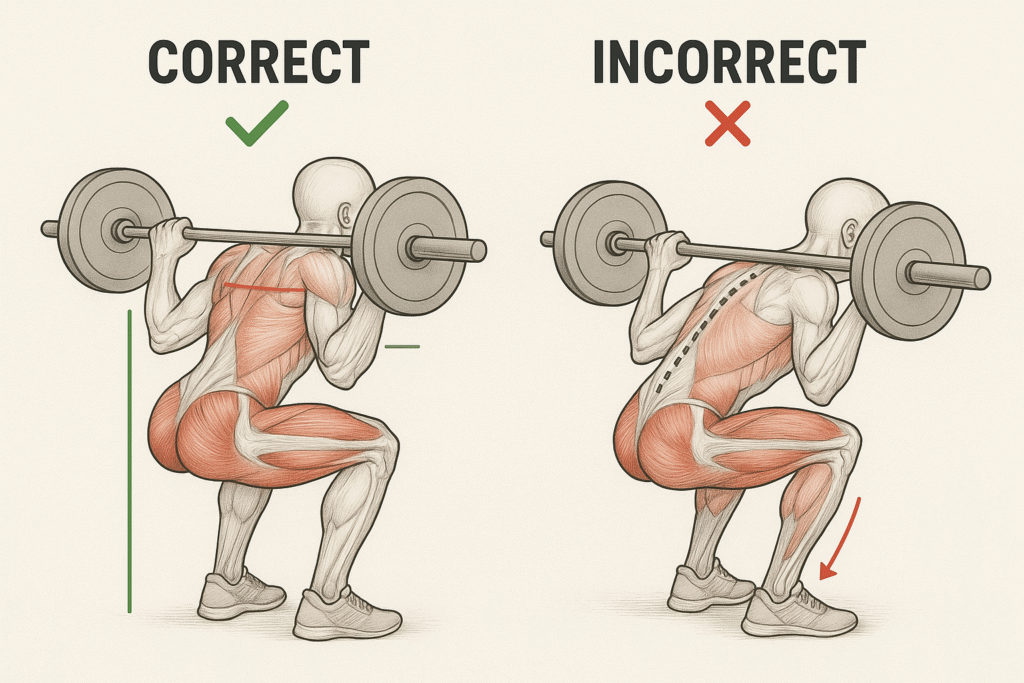
Many powerlifters make critical errors when implementing accessory exercises. Understanding these mistakes can help you maximize your training effectiveness:
Mistake 1: Too Much Volume Adding excessive accessory work can impede recovery from main lift training. Start conservatively and gradually increase volume based on your recovery capacity.
Mistake 2: Lack of Specificity While variety is important, accessory exercises should have clear carryover to your main lifts. Avoid exercises that don’t address specific weaknesses or movement patterns.
Mistake 3: Ignoring Individual Needs Cookie-cutter accessory programs don’t account for individual weaknesses. Analyze your sticking points and choose accessories accordingly.
Mistake 4: Inconsistent Execution Accessory exercises require the same attention to form and progression as main lifts. Track your accessory work and aim for gradual improvements.
Conclusion
Accessory exercises are the secret weapon that separates good powerlifters from great ones. By strategically selecting and programming exercises that address your specific weaknesses while supporting your main lifts, you can break through plateaus and achieve new personal records.
Remember that the best accessory program is one that’s tailored to your individual needs, consistently executed, and properly integrated with your main lift training. Start with the fundamental accessories outlined in this guide, monitor your progress, and adjust based on your results and changing needs.
The journey to powerlifting excellence requires patience, consistency, and intelligent programming. With the right accessory exercises supporting your squat, bench press, and deadlift, you’ll build the strength, stability, and confidence needed to dominate the platform and achieve your powerlifting goals.
FAQs
Q1: How many accessory exercises should I do per training session?
A: Aim for 2-4 accessory exercises per session, focusing on 1-2 primary accessories and 1-2 secondary ones. This prevents excessive fatigue while allowing adequate volume for strength development. Beginners should start with fewer exercises and gradually increase as their work capacity improves.
Q2: Should I do accessory exercises before or after my main lifts?
A: Always perform your main lifts first when you’re fresh and can handle the heaviest loads safely. Accessory exercises should follow your main lift work. However, light activation exercises (like band pull-aparts or bodyweight squats) can be done as part of your warm-up routine.
Q3: How do I know which accessory exercises to prioritize for my specific weaknesses?
A: Identify your sticking points by analyzing where you fail during maximum attempts:
– Squat fails at bottom: Focus on pause squats, front squats, and goblet squats
– Bench press fails at chest: Emphasize incline pressing and dumbbell work
– Bench press fails at lockout: Prioritize close-grip bench press and tricep work
– Deadlift fails off floor: Use deficit deadlifts and Romanian deadlifts
– Deadlift fails at lockout: Incorporate rack pulls and shrugs
Q4: Can I replace main lifts with accessory exercises?
A: No, accessory exercises should supplement, not replace, your main lifts. The squat, bench press, and deadlift must remain the foundation of your training. Accessories are tools to improve these lifts, not substitutes for them. The principle of specificity dictates that you must practice the exact movements you want to improve.
Q5: How often should I change my accessory exercises?
A: Stick with proven accessories for 4-8 weeks before making changes. This allows enough time to see meaningful progress and adaptation. However, you can rotate between similar exercises (e.g., alternating between close-grip bench press and dips every few weeks) to prevent staleness while maintaining specificity.
Q6: How much weight should I use for accessory exercises?
A: Use 60-80% of your main lift max for compound accessories, and focus on higher rep ranges (8-15 reps) for most exercises. The goal is to accumulate quality volume, not set accessory exercise PRs. Leave 1-2 reps in reserve on most accessory sets.
